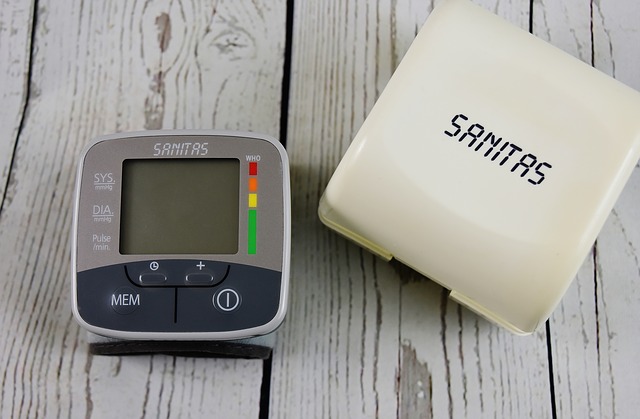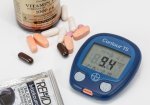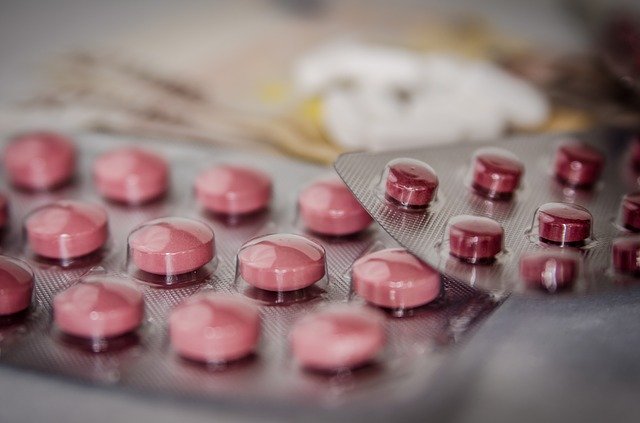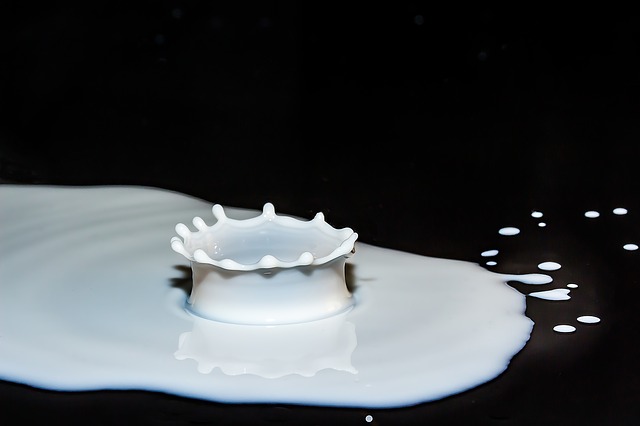Diastolic Hypertension, what you need to know
Including diastolic hypertension causes, symptoms, treatment and medication and possible complications
Diastolic hypertension is also refereed to as Isolated Diastolic Hypertension or IDH in short. Some medical professionals are more comfortable dropping the 'Isolated' prefix which they worry would minimize IDH and its health implications.

While for the longest time, isolated systolic blood pressure (ISH) has been clinically recognized as a hypertension subgroup, this has not been the case with diastolic high blood pressure. Yet, studies show that IDH is an emerging problem in developing countries.
There are a few things to have some clarity on as we explore in detail intriguing scientific research findings to do with diastolic high blood pressure.
First...
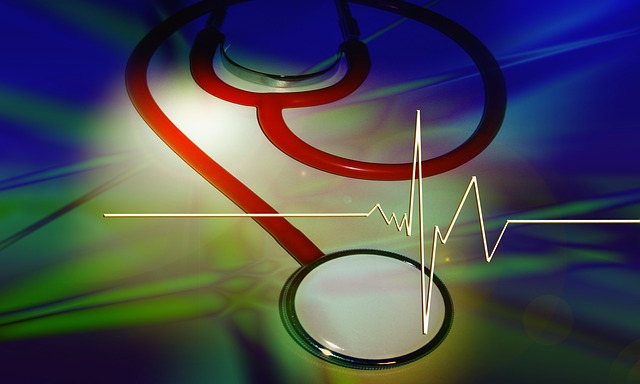
What Is IDH?
If you are alive, as we presume since you are reading this, your heart performs two actions related to cardiac output that are used to measure blood pressure.
Systolic blood pressure is measured when your heart beats (when your heart muscles contract). Diastolic blood pressure is measured in-between heart beats (when your heart muscles relax). During diastolic blood pressure, the blood will be filling back into the heart again, getting ready to pump out (systolic).
If you put your hand to your heart right now there is that "moment of silence" when there is "no beat". This is when there is diastolic blood pressure and when its also measured.
By definition, IDH is when diastolic blood pressure is more than 90 mm Hg and systolic blood pressure less than 140 mm Hg.
Normal blood pressure is when diastolic blood pressure is less than 80mm Hg and systolic blood pressure less than 120 mm Hg.
Systolic blood pressure is the top number while diastolic blood pressure is the bottom number.
In normotensive individuals, or persons with normal blood pressure the normal blood pressure values are less than 120/80 mm Hg.
What has been most unsettling to hypertension researchers is the emerging true scale of the widespread presence of IDH in ordinary people like all these folks down here...
The Prevalence of Diastolic High Blood Pressure
Certain studies have confirmed the concerning extent of the prevalence of IDH in the population.
According to the reputed Framingham Heart Study on diastolic and systolic hypertension published in 2005 in the journal Circulation ( 2005 Mar 8; 111(9):1121-7), diastolic hypertension was found to be more prevalent in young adults of less than 40 years compared to systo-diastolic hypertension (SDH).
SDH is when both systolic and diastolic blood pressure combined have values that are elevated.
The Third National Health and Nutrition Examination Survey (NHANES) III for the period 1988–1991 revealed that diastolic hypertension was most prevalent in young adults of under 40 years and proportional in prevalence to systolic-diastolic hypertension among those between ages 40 to 49 years. Of those your adults, the majority were male.
In addition over 75% of young adult population with untreated hypertension had IDH and ISH.
The two independent studies retained similar findings on the prevalence of IDH across the population.
Diastolic Hypertension Causes and Risk Factors
Causes
Kidney problems have been implicated in possible causes of elevated diastolic blood pressure.
Renovascular hypertension also known as renal hypertension, in particular, is thought to be linked to IDH due to the role the kidneys play in releasing hormones that regulate blood pressure.
Primary hyperaldosteronism also refereed to as Conn's syndrome has also been cited as yet another possible cause of diastolic high blood pressure.
In a similar fashion as renal hypertension, primary hyperaldosteronism is thought to induce the secretion of aldosterone a hormone which in turn stimulates the kidneys to retain sodium raising blood volume which causes increased blood pressure.
Diastolic hypertension has also been reported by Patient Info to be a symptom of mushroom poisoning especially Magic Mushroom
Risk Factors
The Framingham Heart Study identified smoking, drinking, weight gain, being overweight and obesity as strong risk factors that predisposes people to the future development of diastolic hypertension.
A 2012 study published in the Indian Heart Journal (2012 Jul; 64(4): 374–379) corroborated the findings of the Framingham Heart Study by stating that predictors of diastolic hypertension included young age, Body Mas Index (BMI) and being of male sex. Lack of physical activity was also a common risk factor for elevated diastolic blood pressure.
While salt has been shown to be associated with a rise in blood pressure, researchers in the Indian Heart Journal study did not find sodium intake to have any association with isolated systolic hypertension.
Furthermore, the researchers noted that individuals with IDH ran a risk of having their diastolic hypertension evolving into systolic-diastolic hypertension or put simply chronic high blood pressure.
Another 2007 study published in JASH, the Journal of the American Society of Hypertension (2007 Jan-Feb;1(1):82-93), agreed with the Indian researchers stating that people with diastolic high blood pressure had an increased risk for future diabetes and cardiovascular problems.
Interestingly, a 2015 study by Chinese researchers published in the International Journal of Environmental Research and Public Health (12(4), 4395-4405) investigating isolated diastolic hypertension associated risk factors among Chinese society in Anhui Province, showed that a family history of hypertension, high levels of triglyceride, high density lipoprotein, high blood glucose and drinking green tea were risk factors for IDH.
Astonishingly, green tea has been shown to be among herbs effective in lowering blood pressure along with other flavanols-rich foods and beverages such as dark chocolate.
The study also noted that elevated diastolic blood pressure carried a very low risk of cardiovascular death. However, IDH was shown to increase cardiovascular risk and also drove coronary risk in young Chinese people.
Overall, increased activity and weight reduction should be part of individual goals as well as broader pubic health education programs as a way of acting on modifiable risk factors associated with IDH, researchers across the board note.
This would decrease future prevalence of isolated diastolic blood pressure and the consequent increase in cardiovascular diseases.
Diastolic Hypertension Symptoms
Hypertension is notorious for being present without any readily noticeable symptoms. This is how it is concluded as an asymptomatic condition.
Short of an individual having their blood pressure numbers taken, there maybe no real way of knowing. This is one of the reasons the condition continues to be refereed to as a the "silent killer".
Numerous diastolic high blood pressure studies that we have read and analyzed have been largely silent on any known or noticeable symptoms of elevated diastolic blood pressure in particular.
Hypothyroidism also known as underactive thyroid can be an indicator of IDH on account of correlation. It occurs when an individual's thyroid gland fails to produce enough thyroid hormone.
Hypothyroidism has been identified in some advanced hypertension medical texts as being strongly associated with an increased incidence of diastolic hypertension. Theoretically, hypothyroidism itself could then be an indicator of elevated diastolic blood pressure on the basis of this correlation.
In much the same way, renal insufficiency which is also known as kidney insufficiency may be an indicator of the presence of diastolic hypertension.
According to Dr Saputo of DoctorSaputo.com, elevated diastolic blood pressure may result in kidney insufficiency. Renal insufficiency refers to the compromised functioning of kidneys as a result of poor blood flow to the kidneys.
That said, considering that elevated diastolic blood pressure still remains hypertension but a sub-type of it, it is worth considering some other hypertension warning signs and symptoms that are frequently associated with high blood pressure in general.
These symptoms are neither certain nor conclusive as the very same symptoms can be as a result of some other underlying disorders not at all linked to high blood pressure. Usually, if that's the case, if that underlying condition is treated, the symptoms disappear.
It is important to emphasize once again the irreplaceable role of taking blood pressure measurements on a regular basis.
The following is a list of some known hypertension related symptoms that, as noted, are not always definitive.
Also important is to mention that these symptoms are usually associated with severe hypertension. This means by the time they appear the blood pressure values would be at very dangerous levels;
- Heart palpitations
- Nausea
- Blurred vision
- Dizziness
- Headache
- Night sweats and increased sweating
- Difficulty sleeping
- Nose bleeding
Possible Diastolic Hypertension Complications
The good news is that diastolic high blood pressure is a reversible risk factor for a number of health outcomes some of which are fatal. This is why it is important to attend to it once its been detected after a proper diagnosis.
Despite there being an opportunity to stop IDH complications through certain steps such as lifestyle changes, diastolic hypertension complications may indirectly occur.
Unlike systolic high blood pressure, diastolic blood pressure does not progress with age. This limits any possible direct complications.
Complications that have been identified in science out of IDH is its possible progression to isolated systolic hypertension (ISH) or systolic-diastolic hypertension (SDH). Systolic hypertension is a predictor for diabetes, stroke and heart failure among other possible cardiovascular disease complications.
A study was carried out in Canada to determine if diastolic hypertension is an independent risk factor for stroke. According to the 1997 study results published in the journal American Journal of Hypertension (1997 Jun;10(6):634-9), systolic blood pressure is a superior and better predictor of stroke compared to diastolic blood pressure.
Diastolic Hypertension Treatment and Medications
The treatment and management of elevated diastolic blood pressure generally follows already existing guidelines of managing hypertension.
This is because IDH is a form of hypertension which is only discussed in the context of being a sub-type of high blood pressure.
Referring back to the studies which have already mentioned earlier, the worry among hypertension researchers is the risk of diastolic high blood pressure developing into isolated systolic blood pressure or systolic-diastolic hypertension as the individual ages.
Giving treatment advise online back in 2010 to a concerned individual whose diastolic blood pressure elevated to more than 96 mm Hg at night, Dr John Graves, a medical doctor of Nephrology and Hypertension at Mayo Clinic in Rochester, Minnesota recommended the good old lifestyle changes to reduce diastolic pressure.
Dr Graves advised that outside of any underlying medical causes driving elevated diastolic blood pressure, the only steps necessary would be making dietary changes such as pursuing a low sodium diet, stopping smoking and drinking, following an active lifestyle and maintaining a healthy weight.
The treatment of diastolic high blood pressure with hypertension medications does not seem to be entirely settled.
A November 2003 paper published in The Journal of Clinical Hypertension (5: 411–413), illustrates the dilemma of whether or not to treat elevated diastolic blood pressure using conventional pharmaceutical drugs.
Researchers who published the report worry about the historical and continuing difficulties associated with accurately measuring isolated diastolic high blood pressure compared to isolated systolic hypertension.
The study seem to suggest that anti-hypertensive treatment should not be applied in cases of individuals who have high diastolic blood pressure and a systolic blood pressure reading of less than 140 mm Hg at the same time.
Finally, a 1999 study shared in the Journal of Human Hypertension (1999 Nov;13(11):725-7) gave what it called four simple pragmatic rules for managing hypertension.
Rule number 1 advocated for the abandoning of "diastolic blood pressure measurement and rely on systolic blood pressure values for decisions on treatment thresholds and goals".
If this rule is to be obeyed, high diastolic blood pressure numbers cannot be used to decide on treatment therefore rendering the use of pharmacological treatment unwarranted in patients presenting with high diastolic blood pressure readings.
Word of Caution When Measuring IDH on a Home Blood Pressure Monitor
A number of studies have reported the limitations associated with measuring diastolic blood pressure using home blood pressure monitors.
Home blood pressure monitors operate using the oscillometric method.
This is the all familiar system to many home users were the automated cuff is inflated.
An electronic pressure sensor then gives a numerical readout of blood pressure values, both systolic and diastolic blood pressure.
This method results in home readings being at variance with clinic readings. Due to the shortcomings of this system, home readings tend to be lower than professional readings.
What this means is home measurements do hide elevated diastolic blood pressure leading to late detection unless someone actually visits the doctor's room for a professional reading.
It also means were a home reading indicates the presence of IDH, it would be in higher values than presented at home.

|
|
Alcohol and Blood Pressure |
Return to Hypertension Home from Diastolic Hypertension

Disclaimer
Information contained on this website is not meant to replace your doctor's advice.
(c) All Rights Reserved. 2010-2018








